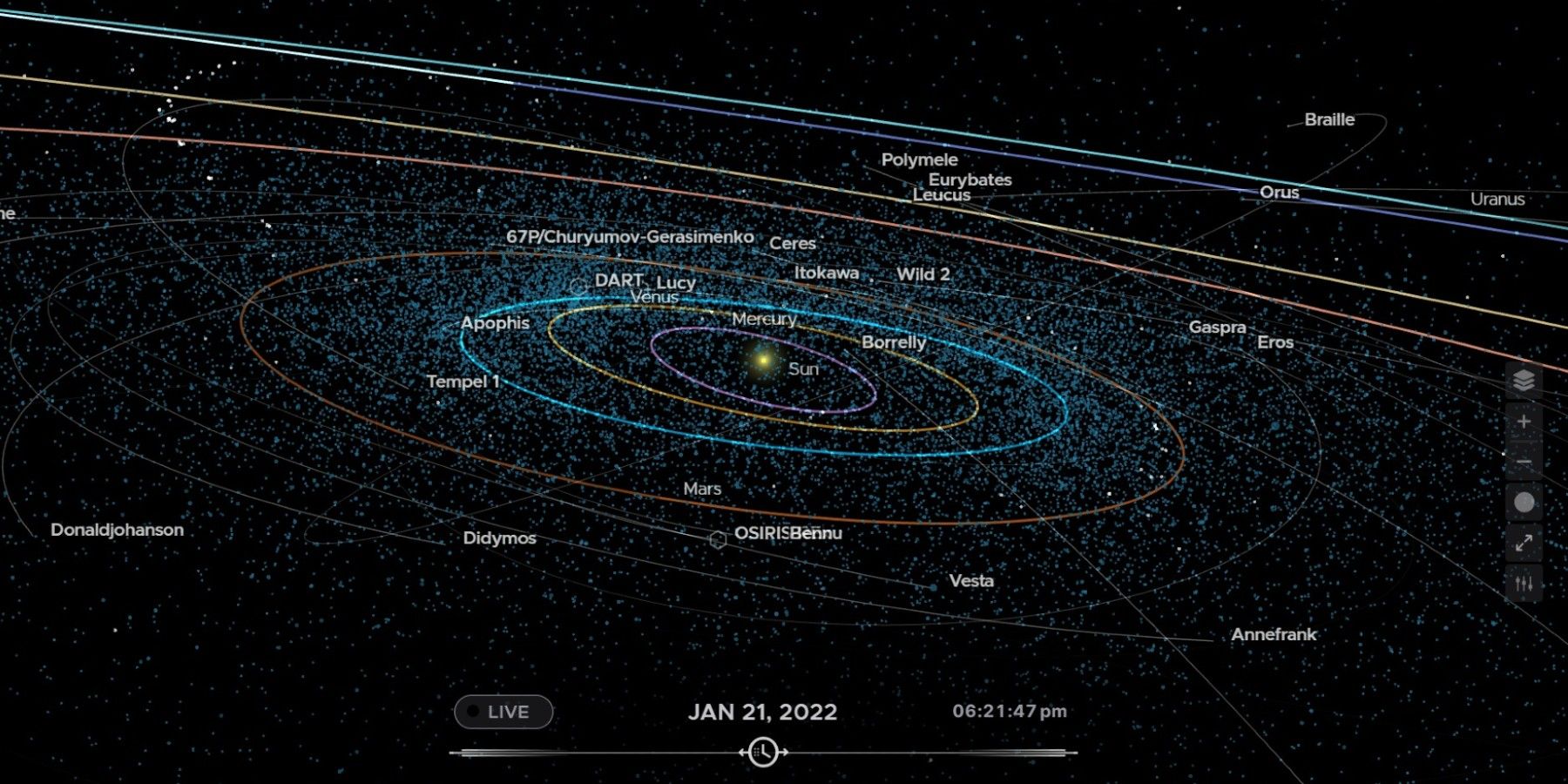NASA will use a miniaturized spacecraft pulled by a sail to chase a bus-sized asteroid. This mission combines two new NASA passions, space sails and asteroids. Space sails are particularly interesting for NASA because they can propel a spacecraft without fuel. They work as standard sails but use solar wind.
NASA keeps an eye out for asteroids that pose a danger to Earth through its Planetary Defense arm. The DART mission will crash into an asteroid to see if it can divert its route. And the Lucy Mission, on its way to the Trojan asteroids, wants to reveal mysteries of the early solar system.
The tiny spacecraft NEA Scout that is on a mission to chase an asteroid will be hitching a ride on the heavy rocket of the Artemis I Mission to the moon this year. NEA Scout is about the size of a shoebox, a type of craft NASA calls Cube-Sat technology. The mission has identified several small asteroids and has its eye on one called 2020 GE. The tiny spacecraft will unfold a space sail hundreds of times larger than itself to take on this deep-space race.
Low-Cost Miniaturized Craft Space Exploration
NEA Scout will be making history as the first deep-space mission to use solar space sails and study small asteroids. The spacecraft will use a special scientific camera that has a resolution of fewer than four inches in size. With it, NEA Scout will measure the small asteroid's size, shape, rotation and surface properties. NASA wants to know if the small asteroid comprises one continual piece or many fragments clumped together.
The 925 feet sail will unfold with aluminum extensible booms. The technology of the sail and the way it unfolds is similar to the sun shield that the Webb Telescope uses. Both materials are thin as human hair and aluminum-coated. The spacecraft will deploy through a dispenser attached to a ring connected to the Artemis I mission rocket and the Orion spacecraft. Besides the sail, the craft will also use the moon's gravitational forces to pick up speed.
Small asteroids like 2020 GE are much more common than larger ones. They pose real dangers to planets, despite their size. In 2013 a small asteroid just 20 meters wide exploded over a Russian city shattering all windows in the town with a massive shockwave. The asteroid injured more than 1,600 people. It was the same type of near-Earth asteroid as 2020 GE. NASA's NEO Scout will make history and pave the way for low-cost, miniaturized spacecraft exploring deep space.


